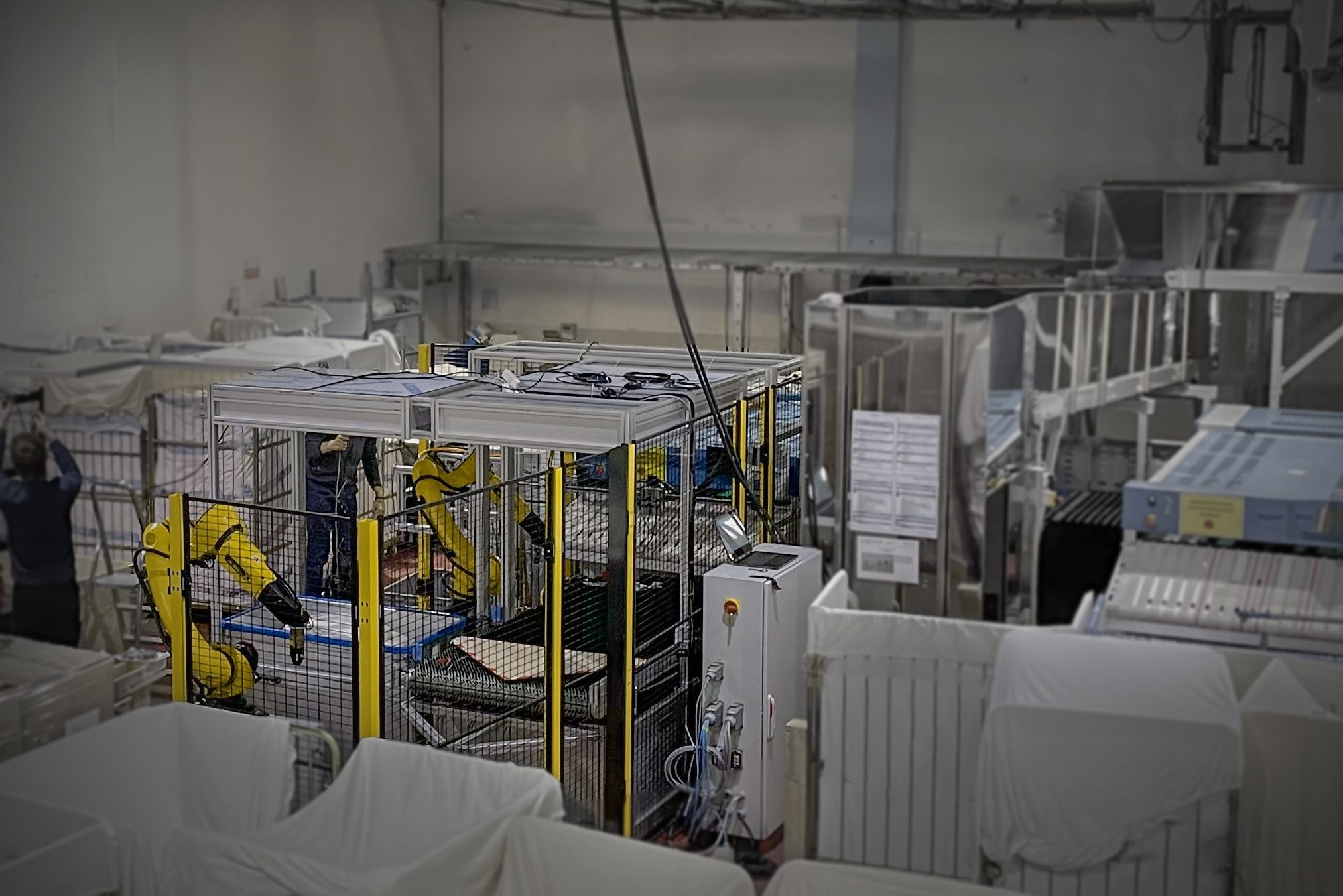A Deep Dive Into Our First Use Case

We find ourselves explaining our first use case a lot. And that’s all good, since we do love seeing the moment when people realize that Industrial Laundry is actually a part of everyone’s life. So this is our explanation written down, hopefully giving you a deeper understanding of what we do as well as a glimpse into our product strategy.
If you’ve read our page about our product strategy, you’ll know that our technology can work for many different use cases. We chose an approach of building step-by-step applications one after the other on our way to build a general and holistic software platform to enable robots to handle every kind of task, ranging from routing cables to handling foils to sewing a t-shirt.
So if we have so many options, why did we choose to focus on Industrial Laundry first? It’s a seemingly niche industry and not that visible to the general public in daily life. We actually identified it as an ideal first use case for us with the help of the incubation workshop XPLORE by UnternehmerTUM in the early days of sewts. The reasons are: it’s a highly regional industry that’s under intense pricing pressure and struggling to find sufficient staff to meet the need of their customers.
Industrial Laundry 101
Let’s look a bit deeper into this. Industrial Laundries take care of the laundry for hotels, hospitals, retirement and care homes as well as washing workwear for multiple professions. In most cases, this is actually done in a textile leasing or textile management model , meaning that the textiles are owned by the laundry and they offer a full-service package that frees up working capital for their customers. Both economically and ecologically, it doesn’t make sense to transport the laundry to be washed in a country with lower wage costs, so in comparison to other textile industries, it’s still a very local business.
There are more than 4000 laundry plants in Germany alone, over 1000 of which are of industrial size. The biggest laundries are able to process 100 tons of laundry each day. Even though you probably didn’t realize it, you’ve most likely already used a towel by one of the big German (Bardusch, Greif, CWS) or European players (ELIS, Alsco, Salesianer) on the market. Check out the tag of your towel the next time you’re in a hotel room and you’ll see!
To be able to cope with the large amount of textiles to be washed, there’s a process at work that is largely but not fully automated. The process chain goes: Sorting – Washing – Drying – Ironing (if needed) – Folding – Packaging. Ironing is a step that for example isn’t needed for towels. Other than that, two major steps are not fully automated yet: Sorting and Folding.
Why We Need Laundry Automation
You can imagine that both Sorting and Folding are not pleasant work. Whereas sorting the dirty laundry involves handling textiles that you might rather not want to handle, folding actually just means feeding a folding machine, which is highly repetitive and unengaging, not to mention strenuous. Finding staff to do these jobs is not easy on a local level, so automation is truly needed for industrial laundry plants.
We considered both process steps for our first development project, however decided to start with automating the feeding of folding machines. This is exactly what VELUM does. It feeds towels and similar laundry made of terrycloth into existing folding machines, closing this gap in automation. Our Computer Vision and AI are the key to success, they analyze the textiles and translate the findings into robotic commands. We are also in a great position to transfer our technology to other use cases with the help of our findings from this use case.
Right now, we are focusing on bringing VELUM on the road as well as starting to work on a second pillar in our product plan. But we’ll keep that a secret for now.